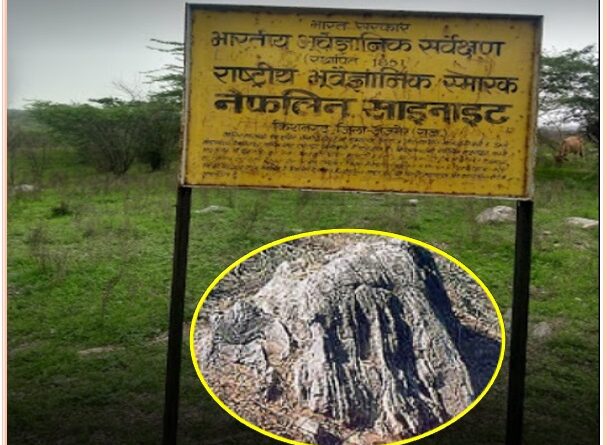Kishangarh Nepheline syenite- A famous Geological Monuments
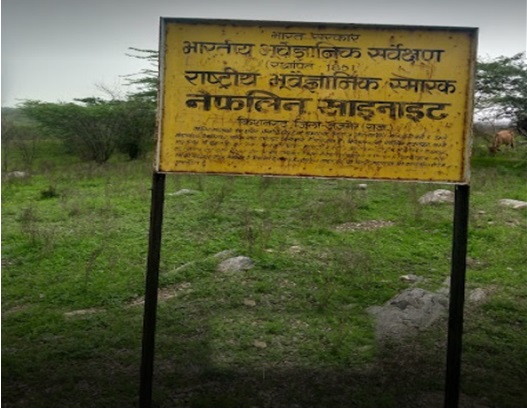
Nepheline syenite at Kishangarh showing the gneissose appearance, form one major body and nine smaller bodies to the north and NE of Kishangarh. They are emplaced conformably within Precambrian schists, gneisses, and quartzites of the Aravalli system.
Apart from the main body at Kishangarh, there are also some thin, extremely sheared bodies of nepheline syenite at the contact of the Delhi supergroup of rocks. The nepheline syenite forms an elongate flattened dome, refolded into a hook-shaped along the boundary of the Delhi Basin rocks.
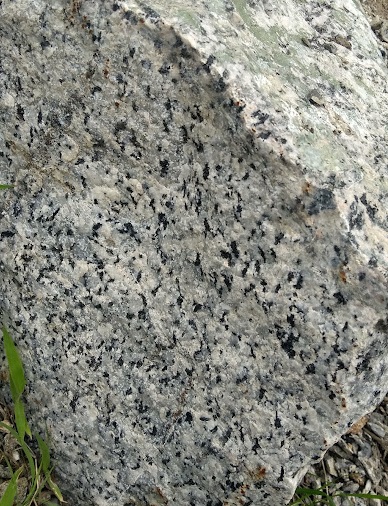
The main body of alkaline syenite is associated with the metasedimentary-metavolcanic assemblages that occur between the Delhi Basin rocks in the west and the banded gneisses of the Sandmata Complex in the east.
Stratigraphy
The lithostratigraphic correlation of the associated metasedimentary and metavolcanic rocks with those of the Aravalli Supergroup suggests a post-Aravalli age of the Kishangarh Nepheline Syenite. On the other hand, evidence of strong shearing along the margins of the Delhi Basin suggests an age of the alkaline body as the post-Aravalli but pre-Delhi in age.

The nepheline syenite which is dominantly gneissic in appearance includes mafic enclaves of different sizes and is also intruded by a number of dykes.
Kishangarh Nepheline Syenite is the Geological Monuments in India notified by the Geological Survey of India (GSI), for their protection, maintenance, promotion, and enhancement of geotourism.
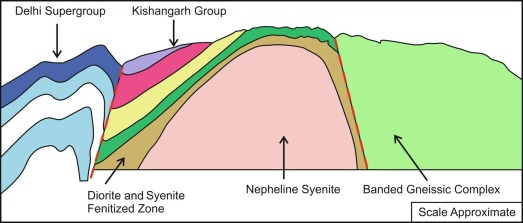
Nepheline syenite
Nepheline syenite is a holocrystalline plutonic igneous rock that consists largely of nepheline and alkali feldspar. The rocks are mostly pale and grey-colored. Nepheline syenites are the silica-under saturated rock in tabular classification by GW Teryll and are a feldspathoid, a solid-solution mineral.
Also read- “Therriaghat, Meghalaya” Cretaceous (K)-Palaeogene (Pg) boundary transition and extinction event
Nepheline has the formula Na3K(Al4Si4O16) and a rock-forming mineral and is classed as a feldspathoid. Common in nepheline syenite, an igneous rock often found in alkaline complexes.
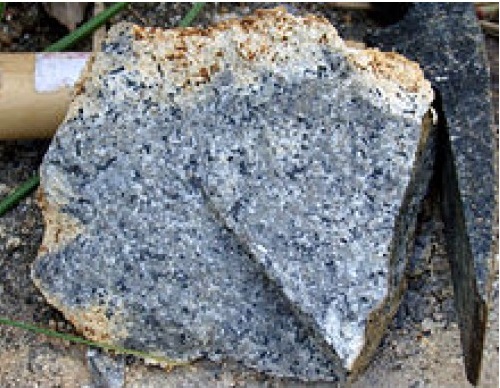
Rocks occurring around Kishangarh belong to four lithostratigraphic units. The nepheline syenite occurs as an intrusive pluton in the Kishangarh group which overlies a granite para-gneiss, leucogranite, and minor bodies of amphibolite and underlies unconformably a sequence of conglomerate, arkose, and quartzite belonging to the Alwar Group of Delhi Supergroup.
Kishangarh is situated on NH-8 and is about 26 km northeast of Ajmer and is also connected by Western Railway Mainline. The monument is about 500 m after the bypass bifurcation of Kishangarh towards Jaipur on NH-8.
